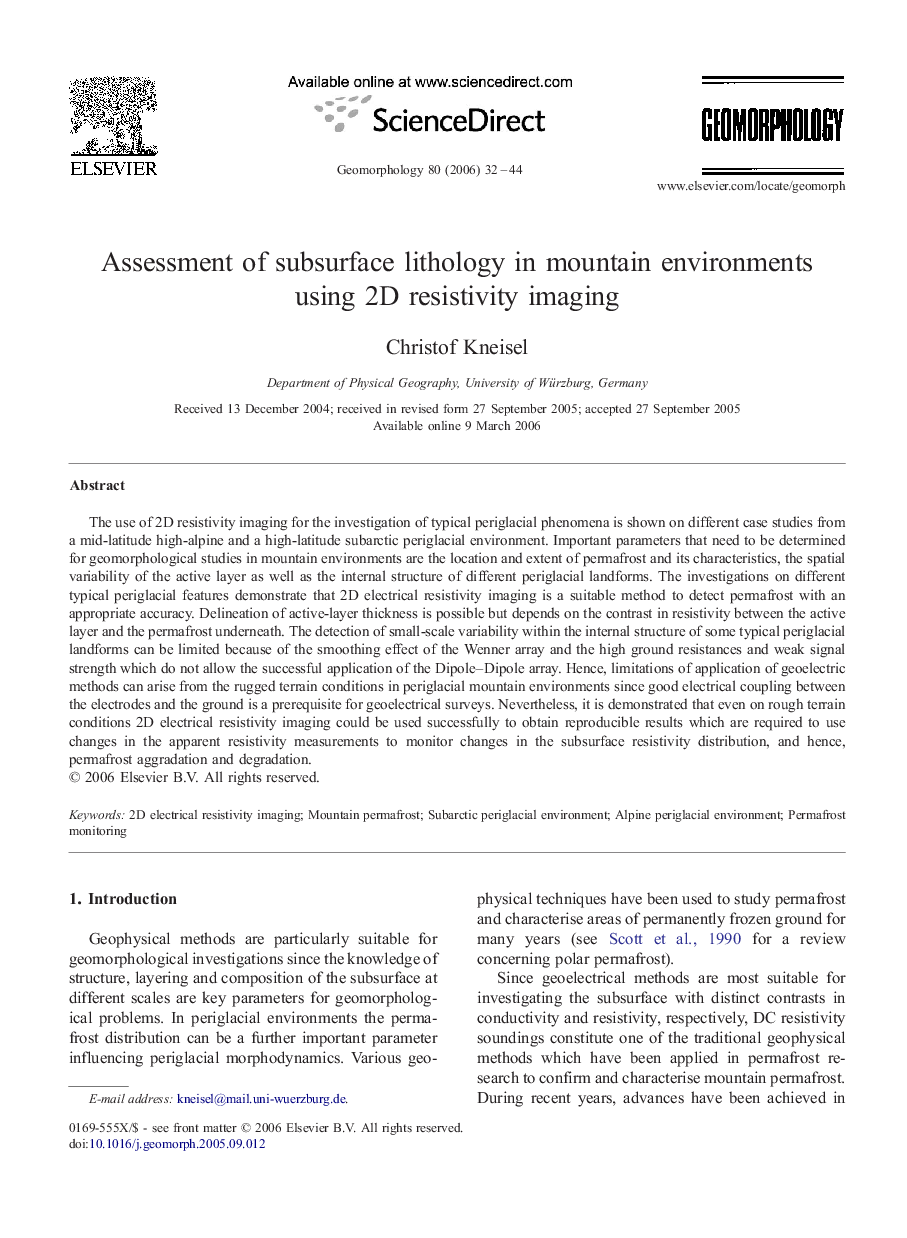| Article ID | Journal | Published Year | Pages | File Type |
|---|---|---|---|---|
| 4687535 | Geomorphology | 2006 | 13 Pages |
The use of 2D resistivity imaging for the investigation of typical periglacial phenomena is shown on different case studies from a mid-latitude high-alpine and a high-latitude subarctic periglacial environment. Important parameters that need to be determined for geomorphological studies in mountain environments are the location and extent of permafrost and its characteristics, the spatial variability of the active layer as well as the internal structure of different periglacial landforms. The investigations on different typical periglacial features demonstrate that 2D electrical resistivity imaging is a suitable method to detect permafrost with an appropriate accuracy. Delineation of active-layer thickness is possible but depends on the contrast in resistivity between the active layer and the permafrost underneath. The detection of small-scale variability within the internal structure of some typical periglacial landforms can be limited because of the smoothing effect of the Wenner array and the high ground resistances and weak signal strength which do not allow the successful application of the Dipole–Dipole array. Hence, limitations of application of geoelectric methods can arise from the rugged terrain conditions in periglacial mountain environments since good electrical coupling between the electrodes and the ground is a prerequisite for geoelectrical surveys. Nevertheless, it is demonstrated that even on rough terrain conditions 2D electrical resistivity imaging could be used successfully to obtain reproducible results which are required to use changes in the apparent resistivity measurements to monitor changes in the subsurface resistivity distribution, and hence, permafrost aggradation and degradation.
